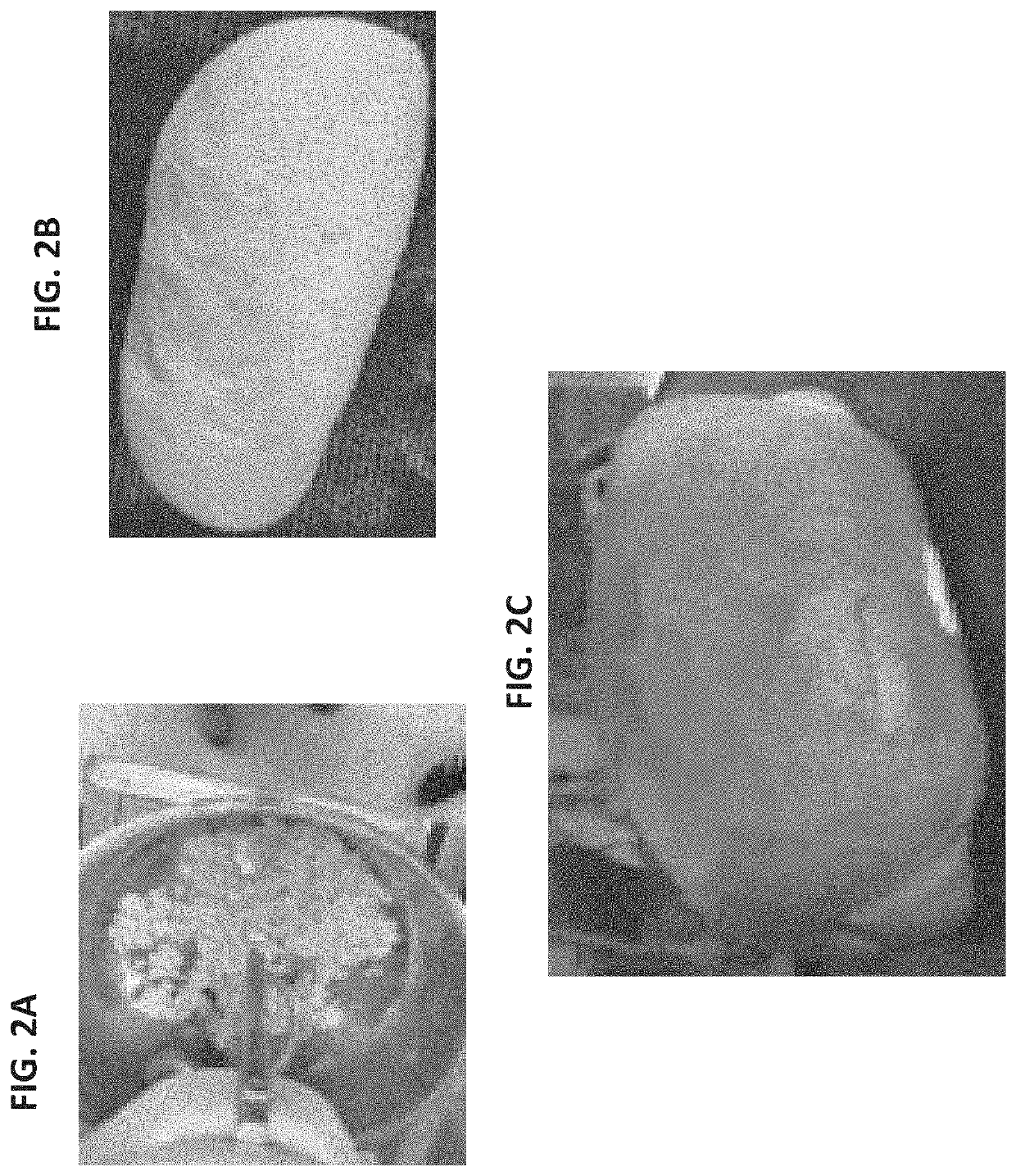Methods of de-epitoping wheat proteins and use of same for the treatment of celiac disease
a wheat protein and celiac disease technology, applied in the field of deepitoping wheat proteins and using same for the treatment of gluten sensitivity, can solve the problems of highly motivated patients who try to maintain a strict dietary regimen, difficult to follow a completely gluten-free diet, and affect the treatment effect, so as to achieve a higher degree of softening, lower stability time, and high development tim
- Summary
- Abstract
- Description
- Claims
- Application Information
AI Technical Summary
Benefits of technology
Problems solved by technology
Method used
Image
Examples
example 1
Comprehensive Mapping of Celiac Epitopes
[0198]Celiac epitopes will be mapped. The assessment is going to be based on the predicted ability of a peptide within the gene sequence to bind specific MHCII molecules. Epitope validation will be performed using MHC II binding assays.
[0199]Methodology for Example 1
[0200]Literature Search. An extensive and exhaustive literature search for all experimentally-validated celiac epitopes will be carried out.
[0201]Computational prediction. Mapping will be performed by using bioinformatic tools that predict immunogenic epitope sequences based on their ability to bind HLA class II genes HLA-DQ2 or HLA-DQ8. For each protein, all possible peptides (9-13 residues each) will be synthesized in their unmodified version or demidated version (post-translational deamidation of glutamine residues to glutamates in peptide sequences by tissue transglutaminase (tTG2) that improves peptide-MHC complex stability (Sollid L, 2012)). All peptide sequences will be anal...
example 2
Abrogate Peptide Immunogenicity (“De-Epitoping”) while Maintaining Gene Product Expression and Folding
[0203]Overview. For the predicted epitopes identified, we will design a library that introduces nucleic acid variations in the positions predicted to bind the MHC II molecules HLA DQ2.5 or DQ8. We will then use this library to search for mutations that abrogate binding to HLA DQ2.5 or DQ8 using a method for library screening or selection like phage display library. We will use deep-sequencing to identify variants with abrogated binding to HLA DQ2.5 or DQ8 (using MHC II binding assay as described for Example 1) but with intact expression and folding using yeast surface display (YSD) library. In this context the YD library will be used to measure and assess expression and folding, not binding. Together with the binding screening described above, this will confirm that the de-epitoped protein is well expressed, well folded, stable, and does not bind MHC II. Importantly, most glutenins ...
example 3
Generate “Celiac-Safe” Gluten Protein Variants with Intact Biophysical Properties
[0218]Full gene sequences of de-epitoped gluten genes will be tested for preservation of their biophysical qualities. This will be done by recombinant expression of de-epitoped genes by any means, including but not restricted to, bacterial, viral or mammalian expression technologies. Purified recombinant de-epitoped gluten genes (single genes or in combination) will be added, in different quantities or combinations to gluten-free dough or flour or any other gluten-free product. Alternatively, flour / dough from crops other than wheat (e.g. rice flour) may be used, to attempt improvement of bread quality. The contribution of de-epitoped variant to bread / flour qualities such as mixing properties, rising, elasticity and strength of dough. Biophysical properties of de-epitoped variants will be compared to unmodified (“WY”) counterparts to validate comparable functionality.
[0219]Methodology:
[0220]Recombinant p...
PUM
| Property | Measurement | Unit |
|---|---|---|
| concentration | aaaaa | aaaaa |
| affinity | aaaaa | aaaaa |
| stability | aaaaa | aaaaa |
Abstract
Description
Claims
Application Information
 Login to View More
Login to View More - R&D
- Intellectual Property
- Life Sciences
- Materials
- Tech Scout
- Unparalleled Data Quality
- Higher Quality Content
- 60% Fewer Hallucinations
Browse by: Latest US Patents, China's latest patents, Technical Efficacy Thesaurus, Application Domain, Technology Topic, Popular Technical Reports.
© 2025 PatSnap. All rights reserved.Legal|Privacy policy|Modern Slavery Act Transparency Statement|Sitemap|About US| Contact US: help@patsnap.com


